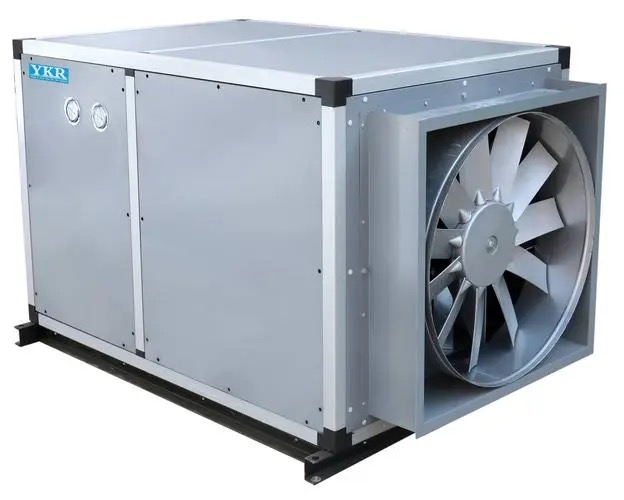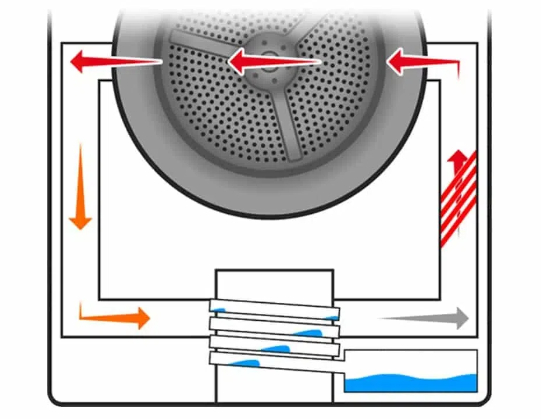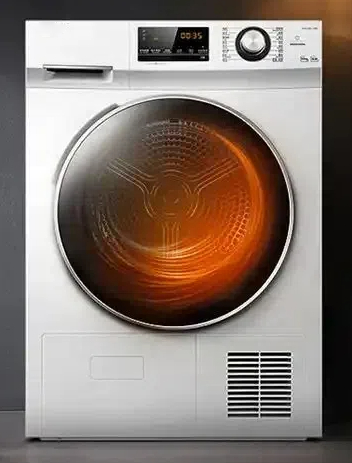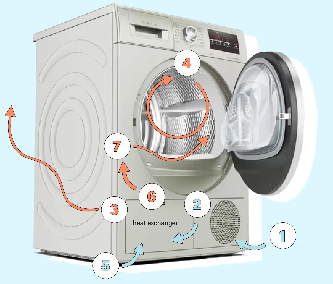
Content Menu
● Introduction to Heat Pump Tumble Dryer Technology
● Understanding the Closed-Loop Heat Exchange System
● The Moisture Condensation Process: A Closer Look
● Heat Pump Dryer vs. Conventional Dryer: A Comparison
● The Benefits of Low-Temperature Clothes Drying
● Understanding Heat Pump Dryer Energy Savings
● Eco-Friendly Laundry Solutions for a Greener Future
● Maintaining Your Heat Pump Dryer for Optimal Performance
● Pros and Cons of Heat Pump Dryers
● Conclusion: The Future of Laundry Drying
● Frequently Asked Questions
>> Q1: How much energy can I save with a heat pump tumble dryer?
>> Q2: Are heat pump dryers worth the higher initial cost?
>> Q3: Do heat pump dryers take longer to dry clothes?
>> Q4: Can heat pump dryers be used in any home?
>> Q5: How often should I maintain my heat pump dryer?
Introduction to Heat Pump Tumble Dryer Technology
In the ever-evolving world of home appliances, the heat pump tumble dryer has emerged as a revolutionary solution for energy-efficient laundry drying. This innovative technology has transformed the way we approach the often energy-intensive task of drying clothes, offering a more eco-friendly and cost-effective alternative to conventional dryers.
Understanding the Closed-Loop Heat Exchange System
At the heart of a heat pump tumble dryer lies its closed-loop heat exchange system. This sophisticated mechanism sets it apart from traditional dryers and is the key to its superior energy efficiency. Let's delve into how this system works:
1. Air Circulation: The process begins with warm air being circulated through the drum containing wet clothes.
2. Moisture Extraction: As the warm air passes through the clothes, it absorbs moisture from the fabrics.
3. Heat Exchange: The moisture-laden air then passes through an evaporator, where it encounters cold refrigerant. This causes the moisture to condense into water droplets.
4. Water Collection: The condensed water is collected in a tank or drained directly, depending on the model.
5. Air Reheating: The now-dry air is reheated by passing through a condenser and is then recirculated back into the drum to continue the drying process.
This closed-loop system ensures that heat is continuously recycled, significantly reducing energy consumption compared to conventional dryers that expel warm air and constantly heat new air.

The Moisture Condensation Process: A Closer Look
The moisture condensation process is a crucial aspect of how heat pump dryers function. As warm, moist air from the drum passes over the cold evaporator coils, the sudden temperature drop causes water vapor to condense into liquid form. This process is similar to how water droplets form on the outside of a cold glass on a warm day.
The efficiency of this condensation process is one of the reasons why heat pump dryers can operate at lower temperatures than conventional dryers. By removing moisture through condensation rather than just heat, these dryers can effectively dry clothes without subjecting them to excessive heat, which can be gentler on fabrics.
Heat Pump Dryer vs. Conventional Dryer: A Comparison
To truly appreciate the advantages of heat pump tumble dryers, it's essential to compare them with conventional dryers:
1. Energy Efficiency: Heat pump dryers typically use 40-50% less energy than conventional condenser or vented dryers.
2. Operating Temperature: Heat pump dryers work at lower temperatures, which is gentler on clothes and helps prevent shrinkage and damage to delicate fabrics.
3. Drying Time: While heat pump dryers may take slightly longer to dry clothes, the energy savings and fabric care benefits often outweigh this factor.
4. Installation Flexibility: Unlike vented dryers, heat pump models don't require external venting, offering more flexibility in terms of placement within the home.
5. Environmental Impact: The reduced energy consumption of heat pump dryers translates to a lower carbon footprint, making them a more eco-friendly choice.
The Benefits of Low-Temperature Clothes Drying
One of the standout features of heat pump tumble dryers is their ability to dry clothes at lower temperatures compared to conventional dryers. This low-temperature drying offers several benefits:
1. Fabric Protection: Lower temperatures mean less stress on fabrics, helping to preserve the quality and longevity of your clothes.
2. Color Preservation: Gentler drying helps maintain the vibrancy of colors, reducing fading over time.
3. Reduced Shrinkage: The lower heat levels minimize the risk of shrinkage, especially for delicate items.
4. Energy Savings: Operating at lower temperatures contributes to the overall energy efficiency of heat pump dryers.
5. Versatility: The ability to dry at lower temperatures makes heat pump dryers suitable for a wider range of fabrics, including delicates that might be damaged in a conventional dryer.
Understanding Heat Pump Dryer Energy Savings
The energy-saving potential of heat pump tumble dryers is one of their most attractive features. On average, these appliances can save up to 50% on energy costs compared to conventional dryers. This significant reduction in energy consumption is achieved through several factors:
1. Heat Recycling: The closed-loop system reuses heat, reducing the energy needed to warm new air.
2. Efficient Moisture Removal: The condensation process is more energy-efficient than simply expelling moist air.
3. Lower Operating Temperatures: Less energy is required to maintain lower drying temperatures.
4. Advanced Sensors: Many models feature moisture sensors that prevent over-drying, further reducing energy waste.
Over time, these energy savings can offset the higher initial cost of a heat pump dryer, making it a wise long-term investment for both your wallet and the environment.
Eco-Friendly Laundry Solutions for a Greener Future
As we become increasingly aware of our environmental impact, heat pump tumble dryers represent a significant step towards more eco-friendly laundry practices. Their reduced energy consumption directly translates to lower greenhouse gas emissions, contributing to a smaller carbon footprint for households.
Moreover, the gentler drying process helps extend the life of clothing, reducing the need for frequent replacements and thereby decreasing textile waste. This aligns with the growing trend towards sustainable living and responsible consumption.

Maintaining Your Heat Pump Dryer for Optimal Performance
To ensure your heat pump tumble dryer continues to operate at peak efficiency, regular maintenance is essential. Here are some key maintenance tips:
1. Clean the Lint Filter: Remove lint after each use to maintain airflow and efficiency.
2. Check and Empty the Water Tank: If your model collects water in a tank, empty it regularly to prevent overflow.
3. Clean the Heat Exchanger: Periodically clean the heat exchanger to remove any buildup that could affect performance.
4. Inspect the Door Seal: Ensure the door seal remains intact to prevent heat loss during operation.
5. Keep the Sensor Clean: If your dryer has a moisture sensor, keep it clean for accurate drying cycles.
By following these maintenance steps, you can help ensure your heat pump dryer continues to provide energy-efficient performance for years to come.
Pros and Cons of Heat Pump Dryers
While heat pump tumble dryers offer numerous advantages, it's important to consider both the pros and cons when deciding if this technology is right for your home:Pros:
- Significant energy savings
- Gentler on clothes
- No need for external venting
- Lower operating temperatures
- Reduced carbon footprint
Cons:
- Higher initial cost
- Longer drying times compared to conventional dryers
- May require more maintenance
- Performance can be affected in very cold environments
- Larger size may not suit all spaces
Conclusion: The Future of Laundry Drying
Heat pump tumble dryers represent a significant leap forward in laundry technology. By offering substantial energy savings, gentler fabric care, and reduced environmental impact, they are poised to become the standard in home laundry appliances. As technology continues to advance and prices become more competitive, we can expect to see wider adoption of this eco-friendly drying solution.
For those looking to reduce their energy consumption, lower their carbon footprint, and take better care of their clothes, a heat pump tumble dryer is certainly worth considering. It's not just an appliance; it's an investment in a more sustainable and efficient future for your laundry routine.

Frequently Asked Questions
Q1: How much energy can I save with a heat pump tumble dryer?
A1: Heat pump tumble dryers can save up to 50% on energy costs compared to conventional dryers. The exact savings depend on usage patterns and electricity rates, but most users see a significant reduction in their energy bills.
Q2: Are heat pump dryers worth the higher initial cost?
A2: While heat pump dryers have a higher upfront cost, they can be worth the investment due to long-term energy savings and gentler treatment of clothes. For households that frequently use a dryer, the energy savings can offset the initial cost over time.
Q3: Do heat pump dryers take longer to dry clothes?
A3: Yes, heat pump dryers typically take longer to dry clothes compared to conventional dryers. However, the energy savings and gentler drying process often outweigh this drawback for many users.
Q4: Can heat pump dryers be used in any home?
A4: Heat pump dryers can be used in most homes as they don't require external venting. However, they do need proper ventilation in the room where they're installed. They may not be suitable for very small spaces due to their typically larger size.
Q5: How often should I maintain my heat pump dryer?
A5: Regular maintenance is key to optimal performance. Clean the lint filter after each use, empty the water tank (if applicable) when full, and clean the heat exchanger every few months or as recommended by the manufacturer. Annual professional servicing can also help maintain efficiency.












